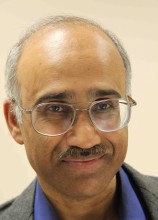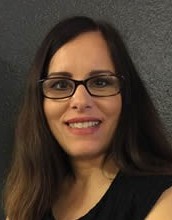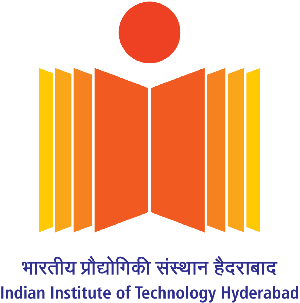 |
Prof. P. P. Vaidyanathan, California Institute of Technology (Caltech), USA
Title of the Talk: Srinivasa Ramanujan and Digital Signal Processing
Abstract:
The great Indian mathematician Srinivasa Ramanujan introduced a summation in 1918, called the Ramanujan-sum. For many years this summation was used by mathematicians to prove important results in number theory. In recent years, some researchers have found applications of this sum in digital signal processing, especially in identifying periodic components of signals buried in noise. In our recent work we have generalized the Ramanujan- sum decomposition in several directions, and this has opened up some new theory as well as applications in the representation and identification of structured signals such as periodic signals. Many beautiful properties are enjoyed by such representations, thanks to the genius and vision of Ramanujan. Our new developments include Ramanujan dictionaries, Ramanujan filter banks, and the Ramanujan MUSIC algorithm, and applications of these in the study of DNA and protein sequences among others. In this talk we will give an overview of the theory and show some applications.
Speaker Biography:
Prof. P. P. Vaidyanathan has been with the California Institute of Technology since 1983. He received the B.Tech. and M.Tech. degrees in Radiophysics and Electronics from the University of Calcutta, India, and the Ph.D degree in Electrical and Computer Engineering from the University of California at Santa Barbara. His research interests are in digital signal processing, multirate systems, filter banks, digital communications, genomic signal processing, number theory, sparse array signal processing, and graph signal processing. He has authored many papers and four books in the signal processing area, and has received prizes for excellence in teaching at Caltech multiple times. Prof. Vaidyanathan served as the department head for Electrical Engineering at Caltech for 2002-2005. He is a Fellow of the IEEE, recipient of the F. E. Terman Award of the American Society for Engineering Education, past distinguished lecturer for the IEEE Signal Processing Society, and recipient of the IEEE CAS Society Golden Jubilee Medal. In 2016 he also received the IEEE Gustav Robert Kirchhoff Award (a Technical Field award) for “fundamental contributions to digital signal processing.” He is a recipient of the IEEE Signal Processing Society’s Technical Achievement Award (2002), Education Award (2012), and Society Award (2016). |
 | Prof. Lina J. Karam, Arizona State University (ASU), USA
Title of the Talk: Generative Sensing: Transforming Unreliable Sensor Data for Reliable Recognition
Abstract:
This talk introduces a deep learning enabled generative sensing framework which integrates low-end sensors with computational intelligence to attain a high recognition accuracy on par with that attained with high-end sensors. The proposed generative sensing framework aims at transforming low-end, low-quality sensor data into higher quality sensor data in terms of achieved classification accuracy. The low-end data can be transformed into higher quality data of the same modality or into data of another modality. Different from existing methods for image generation, the proposed framework is based on discriminative models and targets to maximize the recognition accuracy rather than a similarity measure. This is achieved through the introduction of selective feature regeneration in a deep neural network (DNN).
Speaker Biography:
Dr. Lina Karam received the B.E. degree in computer and communications engineering from the American University of Beirut, Beirut, Lebanon, in 1989 and the M.S. and Ph.D. degrees in electrical engineering from the Georgia Institute of Technology, Atlanta, GA, USA, in 1992 and 1995, respectively. She is currently a full professor in the School of Electrical, Computer & Energy Engineering, Computer Engineering Director, and the Director of the R&D Image, Video, and Usability (IVU) Lab at Arizona State University. She is also the President of PICARIS, LLC, a consulting company on media processing, compression, understanding, and analytics.
Dr. Karam is an IEEE Fellow, the highest grade level in IEEE which is conferred each year to no more than one-tenth of 1% of all IEEE voting members, for her contributions in the image and video processing, visual media compression and transmission, and digital filtering areas. Dr. Karam is a recipient of the National Science Foundation CAREER Award, NASA Technical Innovation Award, the Intel Outstanding Researcher Award, the IEEE Signal Processing Society’s Best Journal Paper Award, and the the IEEE Phoenix Section Outstanding Faculty Award. Her industrial experience includes image and video processing and compression development at AT&T Bell Labs (Murray Hill), multi-dimensional data processing and visualization at Schlumberger, and collaborations on computer vision, machine learning, image/video processing, compression, and transmission projects with various industries including Intel, Qualcomm, Google, NTT, Motorola, Freescale, General Dynamics, and NASA. She has over 200 technical publications and she is an inventor on several issued patents.
Dr. Karam has served on several journal editorial boards, several conference organization committees, and several IEEE technical committees. She served as the lead guest editor of the Proceedings of the IEEE, Special Issue on Perceptual-Based Media Processing. She served as the General Chair of the 2016 IEEE International Conference on Image Processing, Technical Program Chair of the 2009 IEEE International Conference on Image Processing, General Chair of the 2011 IEEE International DSP/SPE Workshops, and as the Lead Guest Editor of the IEEE Journal on Selected Topics in Signal Processing, Special Issue on Visual Quality Assessment.
She has cofounded international technical workshops and conferences (VPQM and QoMEX). She is currently serving on the IEEE Signal Processing Society’s Board of Governors and the IEEE Publications Board as the IEEE Women in Engineering Liaison. She is a member of the Foundation and Trends in Signal Processing Journal Editorial Board and of the IEEE Signal Processing Magazine Senior Editorial Board. She is also a member of the IEEE Signal Processing Society’s Image, Video & Multidimensional Signal Processing Technical Committee, and the IEEE Circuits and Systems Society’s DSP Technical Committee. She is a member of the Signal Processing, Circuits and Systems, and Communications societies of the IEEE.
|




